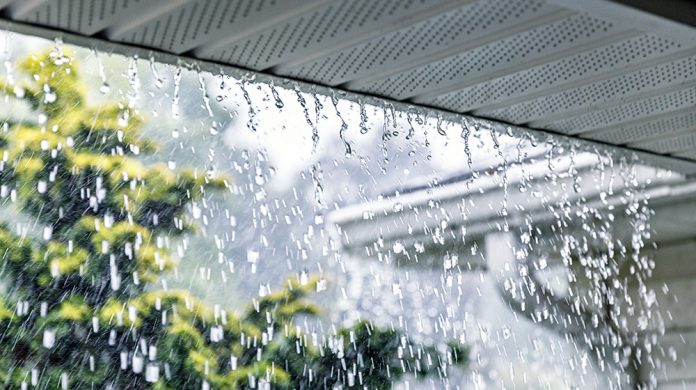If you’re ready for a new roof, now is a great time to upgrade to stronger materials to create an impact-resistant roof that can save you time, money and hassle down the road.
How durable is your roof? That depends on the types of roofing products used for your construction. One type of roofing product—impact-resistant shingles, also known as hail-resistant shingles—can give you a stronger, safer, and more durable roof and reduce the risk of interior hail, wind, and water damage from to a storm, especially if you live in an area where hail and wind put roofs to the test. You may be eligible for a discount on your homeowners insurance premiums when you upgrade.
What are impact resistant roof construction materials?
Impact-resistant shingles and other roof construction materials are designed to resist damage from hail and wind-blown debris — abuse that could damage ordinary shingles. The shingles on an impact-resistant roof are designed to resist high wind and hail damage and are rated Class 4 (see below).
Hail storms are responsible for more than $10 billion in property damage annually and are particularly hard on roofs. That’s because hail balls can be up to five inches or more in diameter and rain down on your roof at speeds of 90 miles per hour or more.
And while the average lifespan of some roofs is 20 years, roofs in hail-prone areas often need to be replaced every seven to 10 years, according to the Insurance Institute for Business and Home Safety (IBHS). The IBHS is one of the organizations—including State Farm ® , which has an in-house laboratory in Bloomington, Illinois—whose researchers have spent years of laboratory and field research studying hail and testing materials designed to manage it. (The IBHS has a newly instituted rating system for impact-resistant shingles, which includes checks for dents, tears, and loss of granules.)
You can choose impact-resistant shingles like asphalt or a metal roofing material in a variety of popular styles, including individual shingles and other roofing materials. Impact-resistant shingles that look like wood or shingles made from cement, plastic, molded polymer, or recycled resin or rubber are also available in multiple colors.
How are impact-resistant roof construction materials classified?
Two companies—Underwriters Laboratories (UL) and FM Approvals—are commonly used to rate the impact resistance of roof construction materials, according to Mark Graham and the National Roofing Contractors Association.
In UL testing, different sized steel balls are dropped from different heights onto newly manufactured roof decks.In FM Approvals tests, pre-cast ice balls of various sizes are cast on newly manufactured material.
A sample passes when it withstands two tests with no evidence of damage such as cracking, splitting, or breaking. Qualified roofs are then rated from 1 to 4, with Class 4 shingles being the highest.
Are impact-resistant roof construction materials worth it?
While impact-resistant products can cost more than traditional shingles, you can save in the long run when you consider reducing the chance of roof and home damage, especially if you live in a hail-prone area . After a major storm, a stronger roof can save you the cost of replacement materials and labor for repairs.
In some states, you may also be eligible for significant discounts on your homeowners insurance premiums when you use qualified impact-resistant roofing products. Check if your state is included in the roof discount based on the products used .
Reasons to consider impact resistant roofing material options
- Higher impact resistance from hail and wind-blown debris than non-impact resistant products
- Fire protection, most products are Class A fire rated
- You may also be eligible for an annual discount on your homeowners insurance premium,, especially if your current roof is made of wood shingles
- If you sell your home, the new owner may be eligible for a homeowners insurance discount, which could be a good selling point
- Less impact to the environment, since fewer roofs will be damaged during a storm





